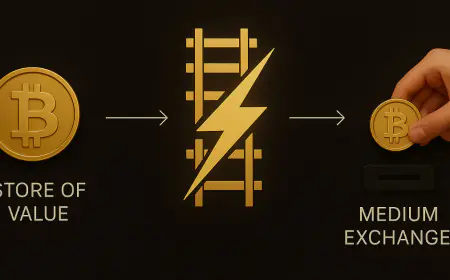Satoshi Nakamoto’s emails reveal early Bitcoin vision
The ongoing legal dispute between the Crypto Open Patent Alliance (COPA) and Craig Wright, the self-proclaimed inventor of Bitcoin, is providing valuable insights into the early days of the cryptocurrency through a series of released emails attributed to Bitcoin’s pseudonymous creator, Satoshi Nakamoto. Satoshi Nakamoto’s emails provide valuable insights The latest batch of emails, spanning […]

The ongoing legal dispute between the Crypto Open Patent Alliance (COPA) and Craig Wright, the self-proclaimed inventor of Bitcoin, is providing valuable insights into the early days of the cryptocurrency through a series of released emails attributed to Bitcoin’s pseudonymous creator, Satoshi Nakamoto.
Satoshi Nakamoto’s emails provide valuable insights
The latest batch of emails, spanning from February 2009 to July 2010, exchanged between Nakamoto and Martti Malmi, an early Bitcoin contributor known as Sirius, were presented as evidence in the COPA vs. Wright case. This legal battle aims to settle the dispute over Wright’s claim to be Satoshi Nakamoto, the elusive figure behind Bitcoin’s creation.
In these correspondences, Nakamoto expressed a preference for cash transactions through the mail as a means of anonymity, acknowledging its potential risks but also highlighting its effectiveness. However, Nakamoto also suggested accepting Bitcoin donations on online forums as an alternative, showcasing his innovative approach to financial transactions.
Despite Bitcoin’s status as the leading cryptocurrency with a trillion-dollar market capitalization, Nakamoto’s reluctance to frame it as an investment underscores his original vision for the digital currency. He cautioned against promoting Bitcoin as an investment, emphasizing the importance of allowing individuals to reach that conclusion independently.
Additionally, Nakamoto expressed reservations about describing Bitcoin as anonymous, opting instead to remove such language from the Bitcoin.org website. He believed that those who valued anonymity would discern it without the need for explicit promotion, reflecting his nuanced understanding of privacy and public perception.
Scalability and Nakamoto’s thinking prowess
Nakamoto’s insights into scalability provide valuable context for understanding Bitcoin’s long-term trajectory. He envisioned a future where the Bitcoin network would consist of a maximum of 100,000 nodes, each playing a crucial role in transaction propagation. This estimate underscores Nakamoto’s commitment to scalability and decentralization, key principles of the Bitcoin ecosystem.
Furthermore, Nakamoto endorsed the Proof-of-Work consensus mechanism as essential for ensuring the integrity and security of the Bitcoin network. Despite the growing popularity of Proof-of-Stake for its environmental benefits, Nakamoto argued that Proof-of-Work was indispensable for facilitating peer-to-peer electronic cash transactions without relying on a trusted third party.
In his efforts to substantiate his claim of being Satoshi Nakamoto, Craig Wright submitted over 160,000 documents to BitMex Research. However, critics dismissed this as a futile endeavor, emphasizing that genuine proof of Nakamoto’s identity would be concise and straightforward, unlike Wright’s extensive submission.
Overall, the release of these emails provides valuable insights into the early days of Bitcoin and Satoshi Nakamoto’s intentions for the cryptocurrency. While the legal battle between COPA and Craig Wright may not result in any groundbreaking revelations, it offers a unique opportunity to delve into the history and evolution of Bitcoin, shedding light on its foundational principles and guiding philosophy.
What's Your Reaction?





































































































